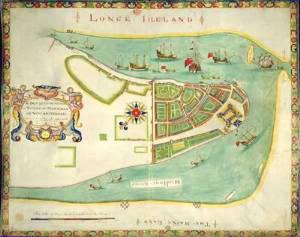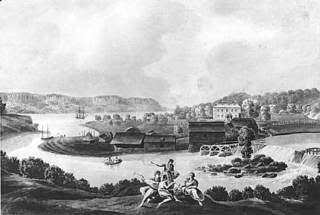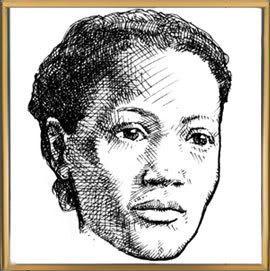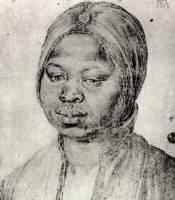The Year: 1654 Colonial Witches In the mid 1600s, Thomas Gilbert and his wife, Lydia, lived with Henry Stiles in Windsor, Connecticut. Mr. Stiles was about 52 years of age, which was considered old at the time. Lydia performed many services for Mr. Stiles, such as mending his clothes and tending him when he was sick. How this living arrangement came about is unclear, but from all outward appearances, it was a satisfactory one. Artist’s Conceptualization of a Witchcraft Trial In the autumn of 1651, in Windsor, Connecticut, an accident took place during training exercises by a group of local militiamen. Thomas Allyn was carrying his musket in a cocked position and inadvertently hit it against a tree causing it…

Native Americans in Connecticut
The Year: 1636 Image: Connecticut Tribes Map There were originally many small American Indian tribes in Connecticut, including the Nipmuc, Mohegan, Pequot, and the Niantic. Though all of them spoke related languages and shared many cultural similarities, each tribe had its own leadership and its own territory. European epidemics and warfare devastated the Connecticut Indians, and the survivors had to merge with other tribes to survive. All of their languages have been lost, but native people continue to preserve their cultural heritage in Connecticut today. Nipmuc The northeast section of Connecticut and part of Massachusetts was occupied by the Nipmuc tribe. This group actually includes four tribes or bands – the Nipmucks, Nashaways, Quabaugs, and Wabaquassets. Since the Nipmuc homeland…

Slavery in New Amsterdam
The Years: 1625 through 1664 Image: New Amsterdam Map Dutch New Amsterdam In 1624, the Dutch West India Company (DWIC) began settling the colony of New Netherland, the territory granted to the Dutch West India Company in 1621 by the government of Holland. It stretched from Manhattan to Albany along both sides of the Hudson River, and eventually included the areas now known as New York and New Jersey, and parts of Delaware and Connecticut. This colony was set up as a business, and its main goal was to make money for the DWIC by trading beaver pelts and other goods with Europe.
Phoebe Yates Pember
Civil War Nurse in Virginia Phoebe Yates Levy was born on August 18, 1823. She was the fourth of six daughters of a prosperous and socially prominent Jewish family in Charleston, South Carolina. Her father was a successful merchant and her mother was a popular actress. Members of Phoebe’s family were quite active in public life during the war. Her sister Eugenia Levy Phillips, a Confederate spy, was banished to an island. Her brother Samuel was the highest ranking Jewish officer in Savannah, Georgia. The family’s wealth enabled them to gain acceptance in the community, which wasn’t easy for Jews. They moved among Charleston’s elite until a series of financial setbacks sent them to Savannah, Georgia, in 1850. Phoebe was…
Eunice Goody Cole
The Witch of Hampton New Englanders in the seventeenth century feared the devil above all else. They believed that natural disasters were caused by a person who was possessed by Old Nick. If their crops failed, if a cow went dry, or if an epidemic struck, they blamed someone in the community, usually an eccentric old person. William and Eunice Cole first came to New Hampshire as indentured servants from London, England in 1638. They became part of a new colony at Exeter that was being established under the leadership of Reverend John Wheelwright. In 1640, the Coles decided to move to the settlement at nearby Hampton. Wheelwright moved from Exeter to Wells, Maine, but was ousted from there and…

Margaret Hardenbroeck Philipse
Philipse Manor The Year: 1659 The Philipses owned 52,000 acres of land along the Hudson River, where they constructed this lavish estate, clustered with mills, barns and other structures. Born circa 1630, Margaret Hardenbroeck’s early life in Holland is unclear, but she would have likely received some education. Holland was the only European country in seventeenth-century Europe to provide primary education to females. The Reformed Church urged equality for women, and the Dutch brought their liberal attitudes concerning women’s rights to the New World. In 1659, Margaret came to New Amsterdam (later New York) as an ambitious twenty-two-year-old with an unusual job—she was a factor for a well-to-do cousin, managing his New World dealings. A factor is an agent employed…
Rebecca Lee Crumpler
First African American Woman Doctor Rebecca Lee was born in Delaware in 1833. An aunt in Pennsylvania, who spent much of her time caring for sick neighbors, raised her. Due to her aunt’s influence, Rebecca developed a strong compassion for the sick at a very young age, and learned to care for ill patients. The first formal school for nursing did not open until 1873, so she performed her work without any formal training. By 1852, she moved to Charlestown, Massachusetts, where she worked as a nurse for the next eight years. Her dedication gained her notice from the doctors she served under, and with their recommendations, she entered the New England Female Medical College in Boston in 1860. In…

Dorothy Creole
Slave in New Amsterdam Dorothy Creole was one of the first black women in the Dutch colony of New Amsterdam on the island of Manhattan. She was African, but she came from a world where West Africans and Europeans had been trading for two centuries and their cultures had mixed. She may have spoken Spanish or Portuguese, in addition to her African language. The name Creole may have begun as a descriptive term used by Europeans, and later developed into a surname. Dorothy might have arrived in 1627, when records indicate that three enslaved women were brought into New Amsterdam, which was little more than a muddy village with thirty wooden houses and a population of less than two hundred…

Elizabeth Key
First African Woman to Win Her Freedom in Court Elizabeth Key was the first woman of African ancestry in the American colonies to sue for her freedom from slavery and win. Elizabeth Key won her freedom and that of her infant son on July 21, 1656 in the colony of Virginia, in one of the earliest freedom suits in the colonies. She sued based on the fact that her father was an Englishman and that she was a baptized Christian. Born in Warwick County, Virginia in 1630, Elizabeth Key was the illegitimate daughter of an enslaved black mother and a white English planter father, Thomas Key, who was also a member of the Virginia House of Burgesses. She spent the…
Pauline Cushman
Civil War Spy and Theater Actress Pauline Cushman, a Union spy, was born Harriet Wood on June 10, 1833, in New Orleans and spent some of her early childhood there. Her father then moved the family to Grand Rapids, Michigan. Pauline did not like it there, and at seventeen she ran away to New York to become an actress. She landed some small parts and caught the attention of a theatre owner from New Orleans, who hired her on the spot. While Pauline was in New York, she married Charles Dickinson, a musician, on February 7, 1853. Sometime after their wedding, Charles and Pauline moved to his hometown of Cleveland, Ohio, where he found work as a music teacher. In…